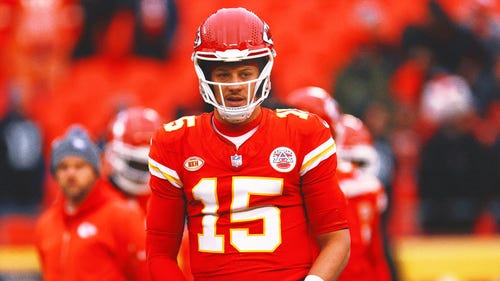
Pereira breaks down NFL Week 9 calls

I feel a little like a defenseless receiver.
I got bombarded Sunday ... bombarded by my twitter followers ... bombarded by the NFL on FOX guys, who were watching all of the games on set, with everyone questioning what is legal and what is illegal when it comes to hits on defenseless players.
And they were also questioning the consistency of the way that is being called by officials.
You know what, I can't blame them. This is such a total change from the football as we knew it not more than a decade ago. But the fact is, the game has changed so much, and the officials have been so conditioned to call hits on defenseless players, that when it comes to a synopsis of the whole situation, I don't think anybody is happy.
But the fact is, the No. 1 priority in the NFL today is protection from concussions. But, it's also a fact that some officials seem to get it, while others clearly don't.
I have two perfect samples from Sunday that shows the consistency issues.
The first took place in the Minnesota-Dallas game.
Here was the situation: Dallas had the ball, first-and-10 at its own 35-yard line with 4:26 left in the third quarter. Dallas led 20-17.
Cowboys quarterback Tony Romo attempted a pass to Terrance Williams that was broken up on a big hit by Vikings safety Mistral Raymond. A flag immediately fell, but eventually the flag was picked up with no penalty.
In this day and age of hits on defenseless players, the rule book states that if you have any question, throw the flag. In other words, they have said for a number of years, it's OK to err on the side of safety.
But the league is doing a better job of trying to avoid the errors. And in this case the hit looked bad in real time, but in fact, Raymond's head was up, the contact was shoulder-to-shoulder and after discussing it as a crew, they decided to pick up the flag.
This is exactly what crews should be doing. Get input from others, and most importantly, getting the call right.
However, I don't feel as good about the call made in overtime in the San Diego-Washington game.
Here was the situation: The Redskins had the ball, first-and-20 from the San Diego 43-yard line with 10:45 left in overtime. The score was tied at 24.
Washington quarterback Robert Griffin III completes a 17-yard pass to Pierre Garcon and he's hit by two Chargers â Eric Weddle and Andrew Gachkar. Gachkar was flagged for an illegal hit, but this time, the flag wasn't picked up. In my opinion, it should have been. Gachkar's head was up and the contact that was made was on the shoulder.
So the inconsistency continues . . . and maybe the lack of understanding of the rule continues to exist as well.
I don't know if it's just me, or Sunday was representative of the fact that hit son defenseless players is a concept that people are having a hard time understanding and embracing.
WHEN TO CALL IT?
Roughing the passer is a tough call to make.
A split second is usually all you have. . .
And as an official, it's been drilled into you to protect the quarterback. Then you're left to your own judgment.
Let's look at a roughing call that involved Saints quarterback Drew Brees in their game against the Jets.
Here was the situation: The Saints had the ball, third-and-6 at the New Orleans 40-yard line with 9:29 left in the fourth quarter. The Jets led 27-17.
Brees took the snap out of the shotgun and attempted a pass to Jimmy Graham that was incomplete. Saints safety Josh Bush was blitzing not the play and was called for going low for what the officials deemed to be in the knee area.
However, I don't think it was.
The rule book states that a rushing passer is prohibited from forcibly hitting from the knee area or below. That wasn't the case here. The contact was with the shoulder in the upper thigh and not what the rule was intended to protect.
WE MUST BLAME SOMEONE
Blame it on the sun. Blame it on Obama. Blame it on the economy.
In reality, however, there's nobody to blame it on but the side judge in the San Diego-Washington game.
Here was the situation: San Diego had the ball, first-and-10 at the Washington 33-yard line with 1:27 left in the second quarter. The score was tied 7-7.
Chargers quarterback Philip Rivers completed a short, 4-yard pass to Keenan Allen with David Amerson defending on the play. Offensive pass interference was called on Allen.
Unfortunately, one side judge is going to be very embarrassed when he sees the video of this. Because there was no contact with Allen and anybody else. Not even a push to get a way. Amerson didn't come close to him until after he caught the ball.

Missed calls happen sometimes. I'm still going with the sun as the as the culprit.










